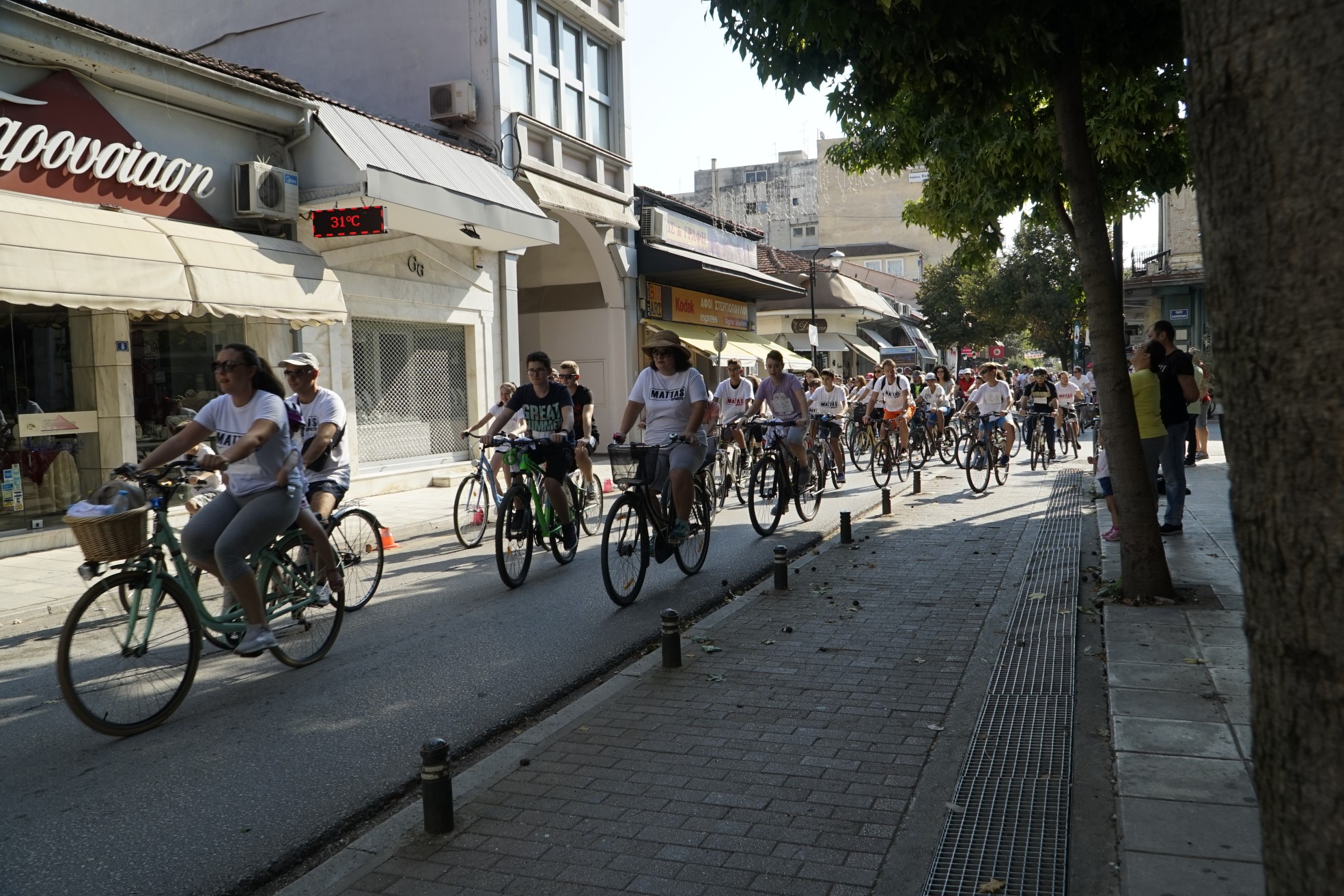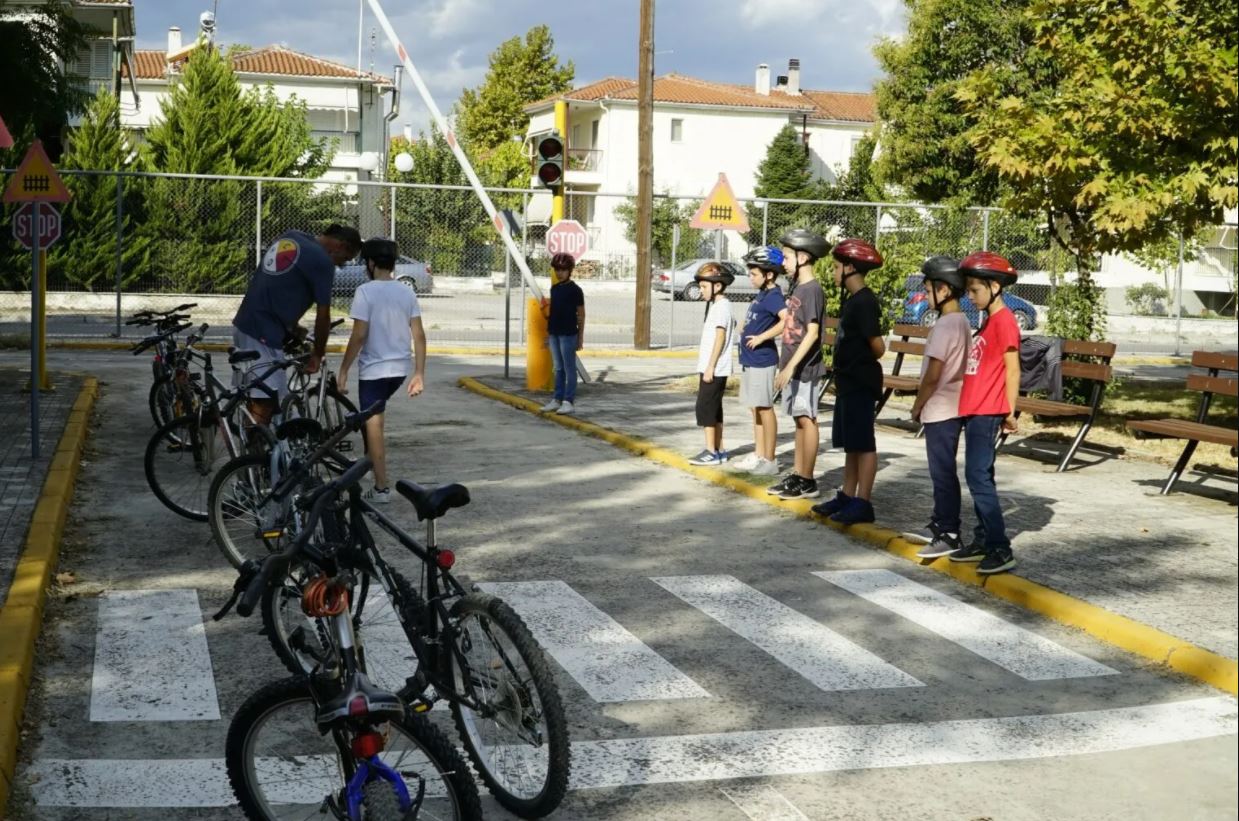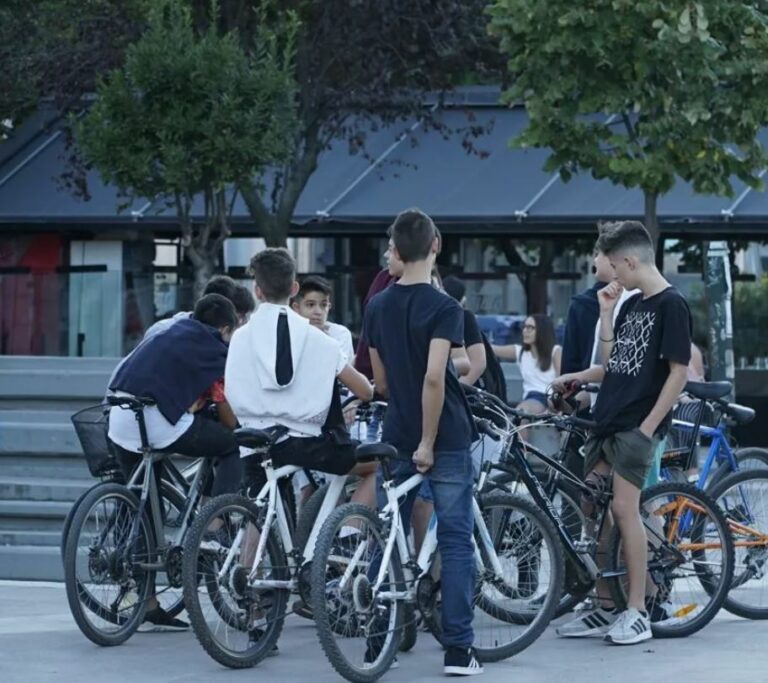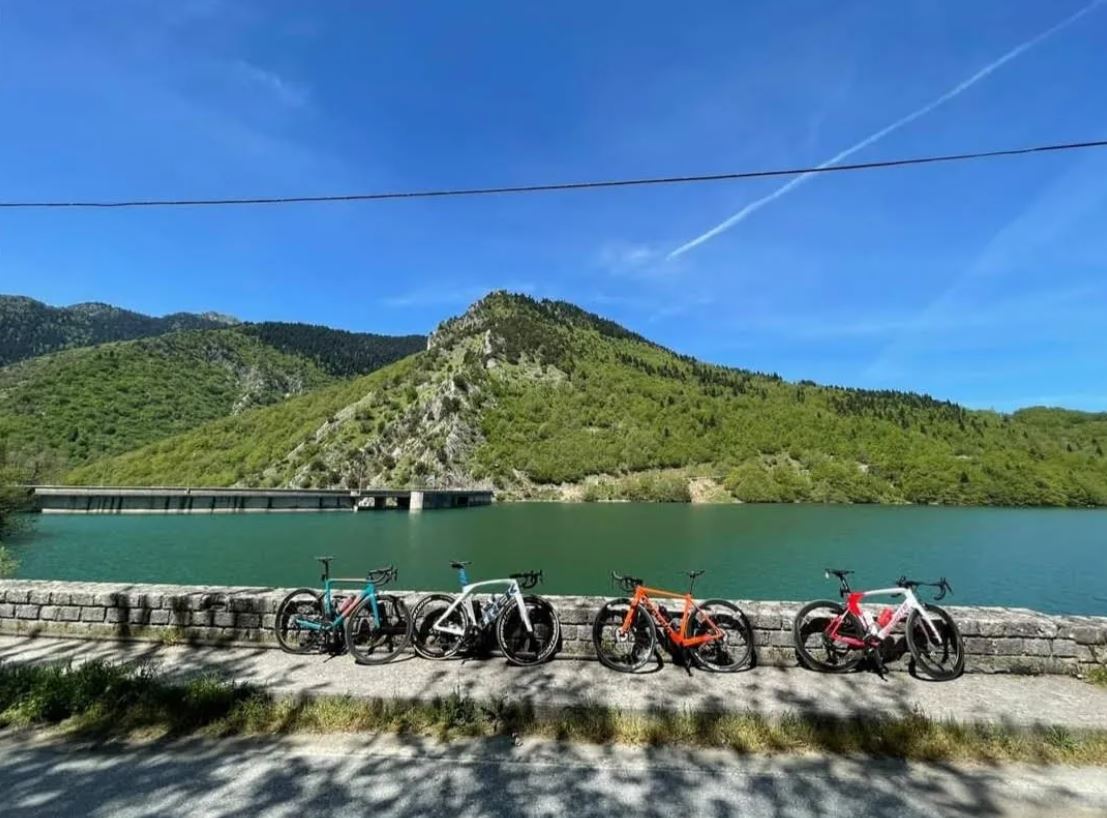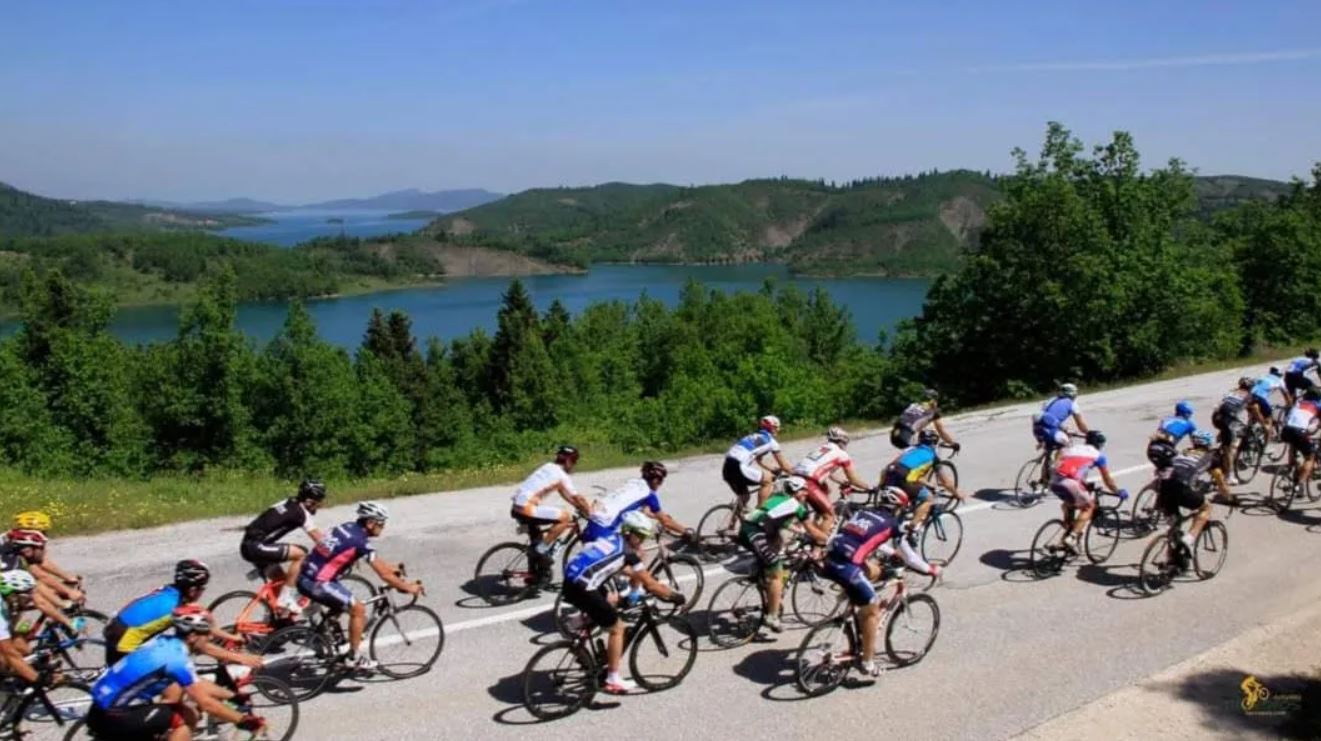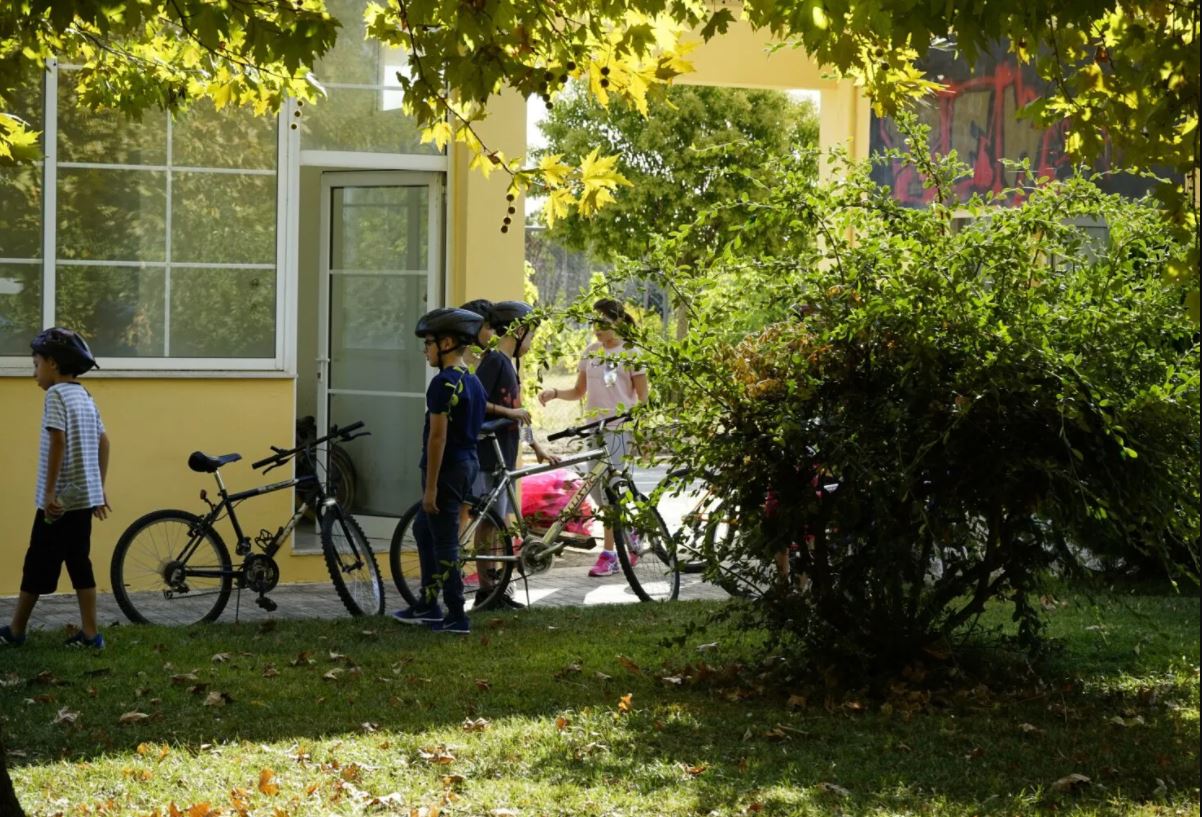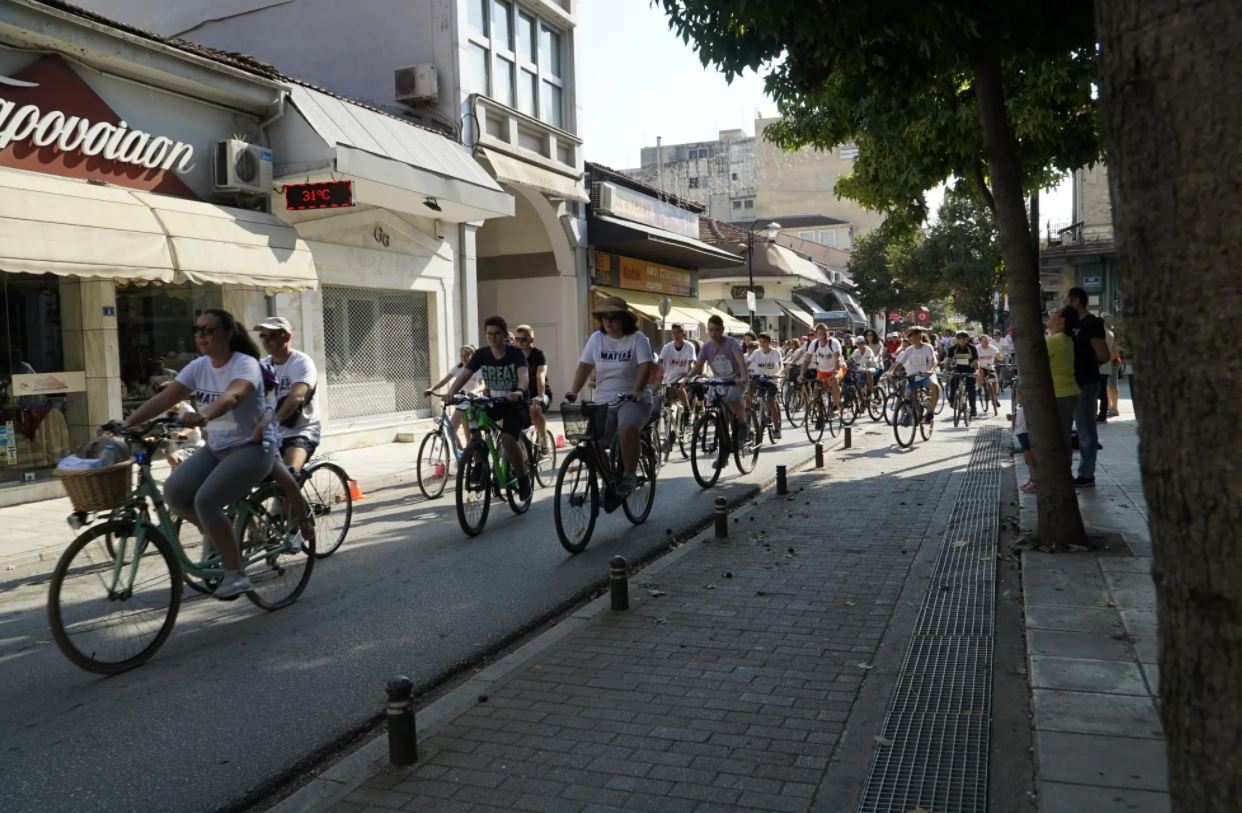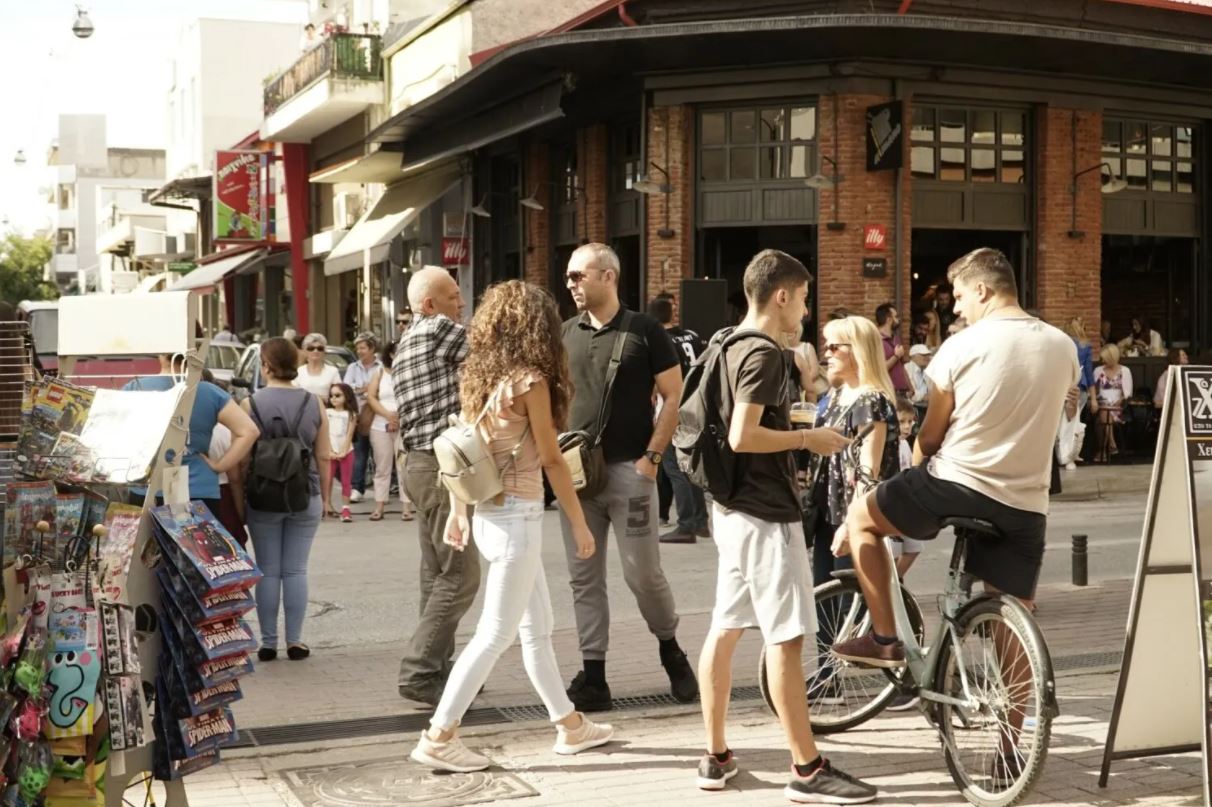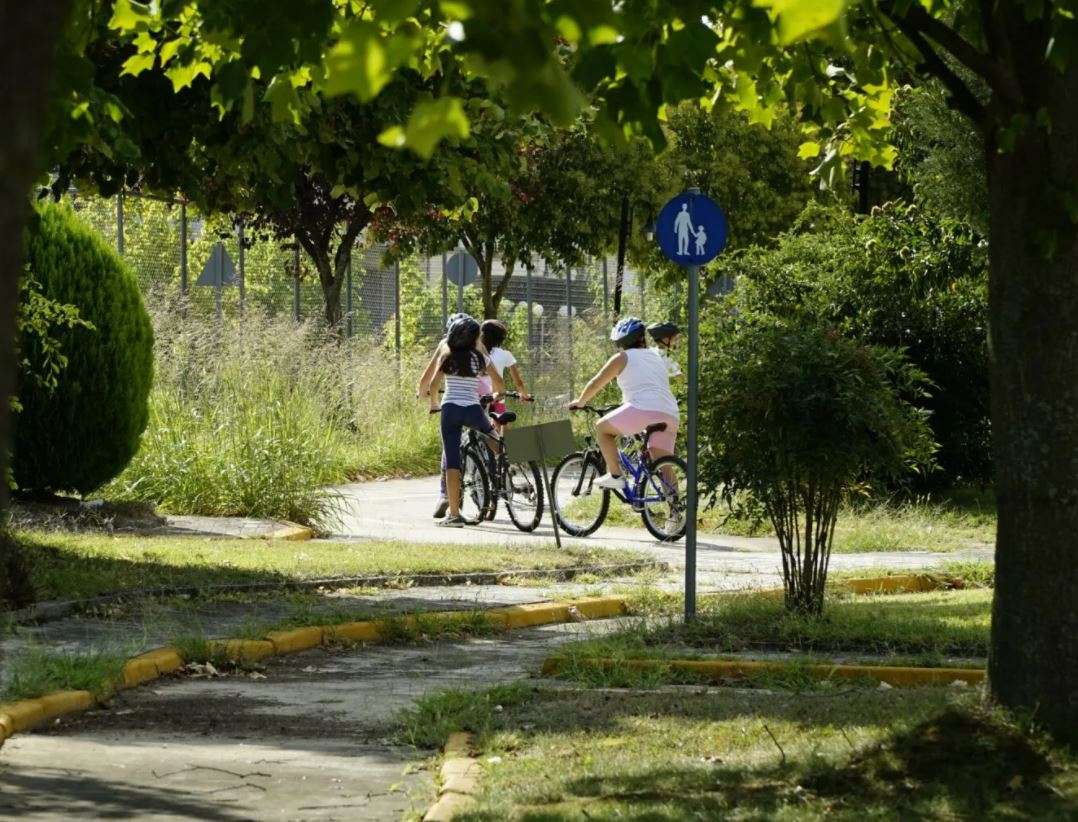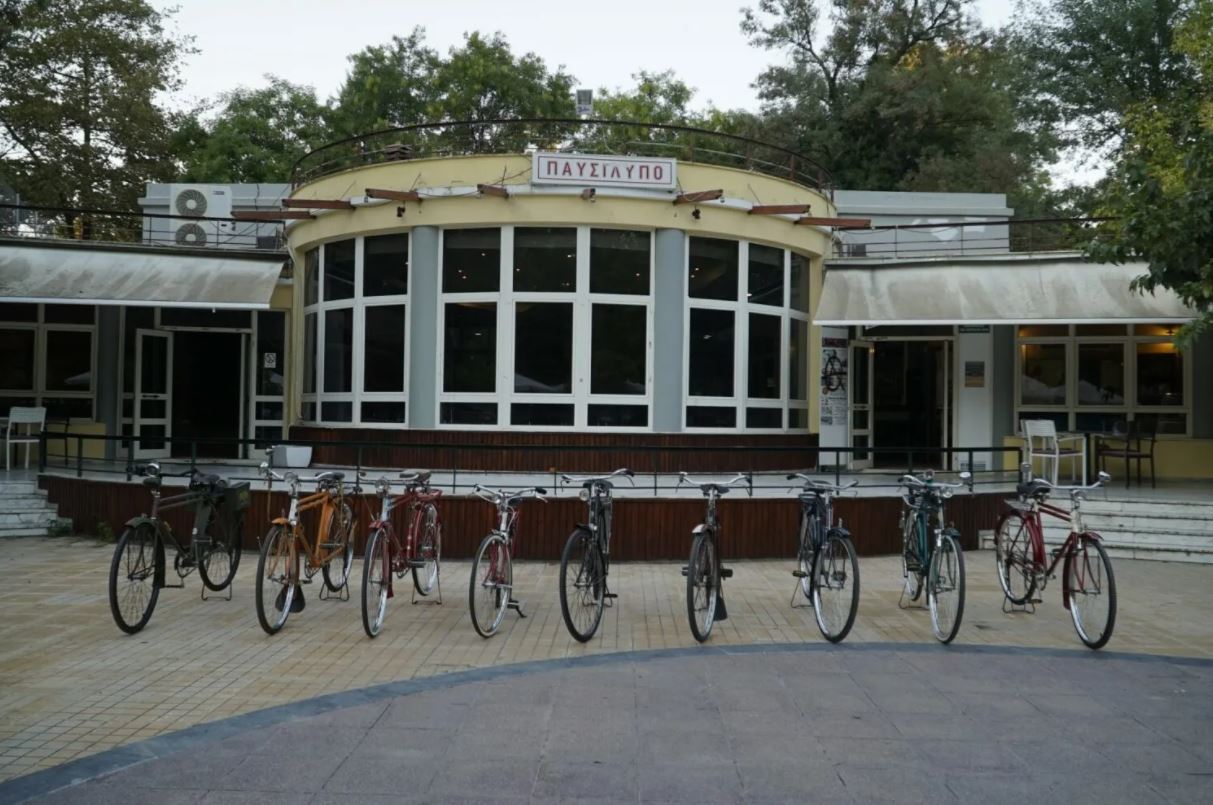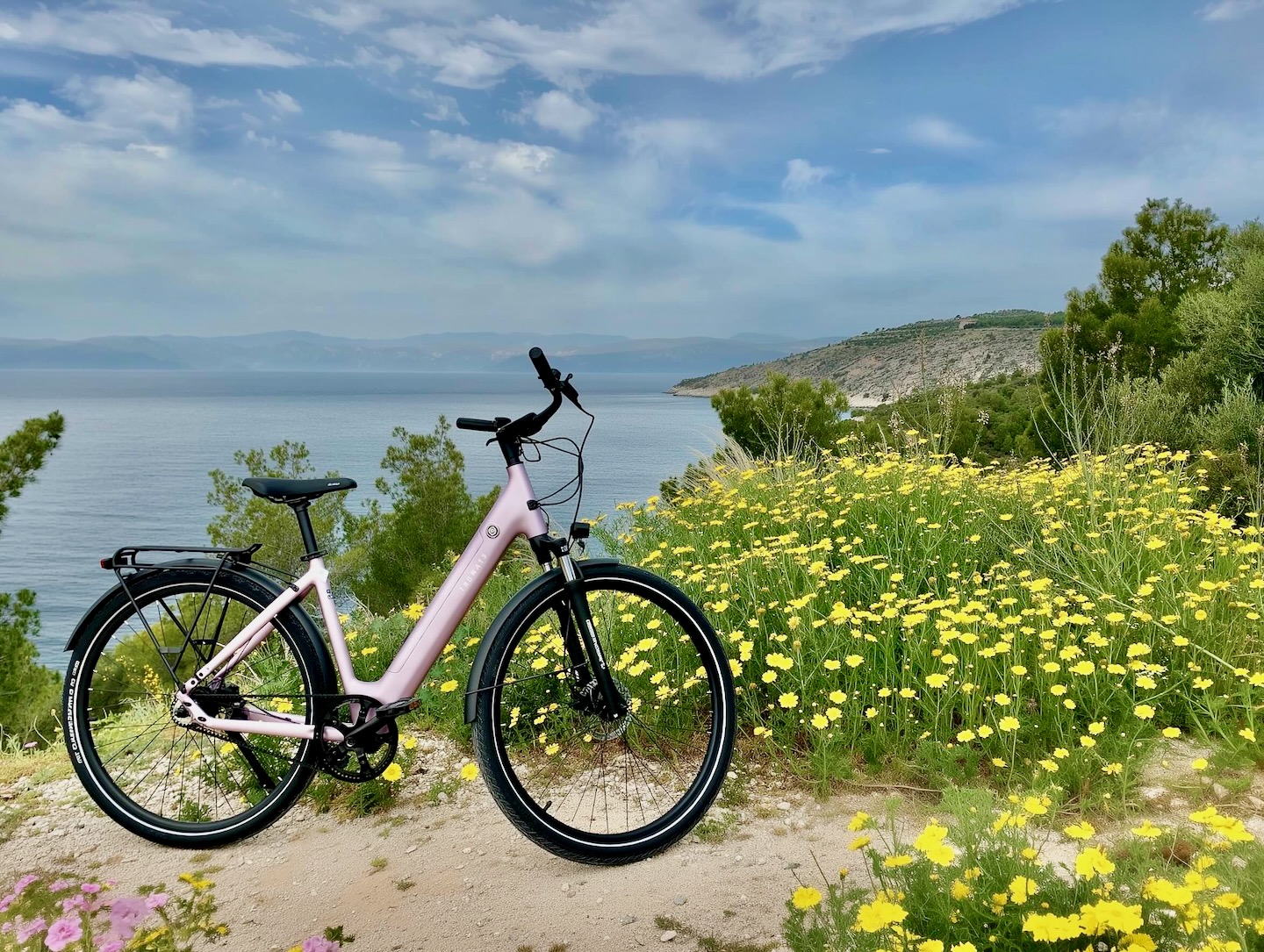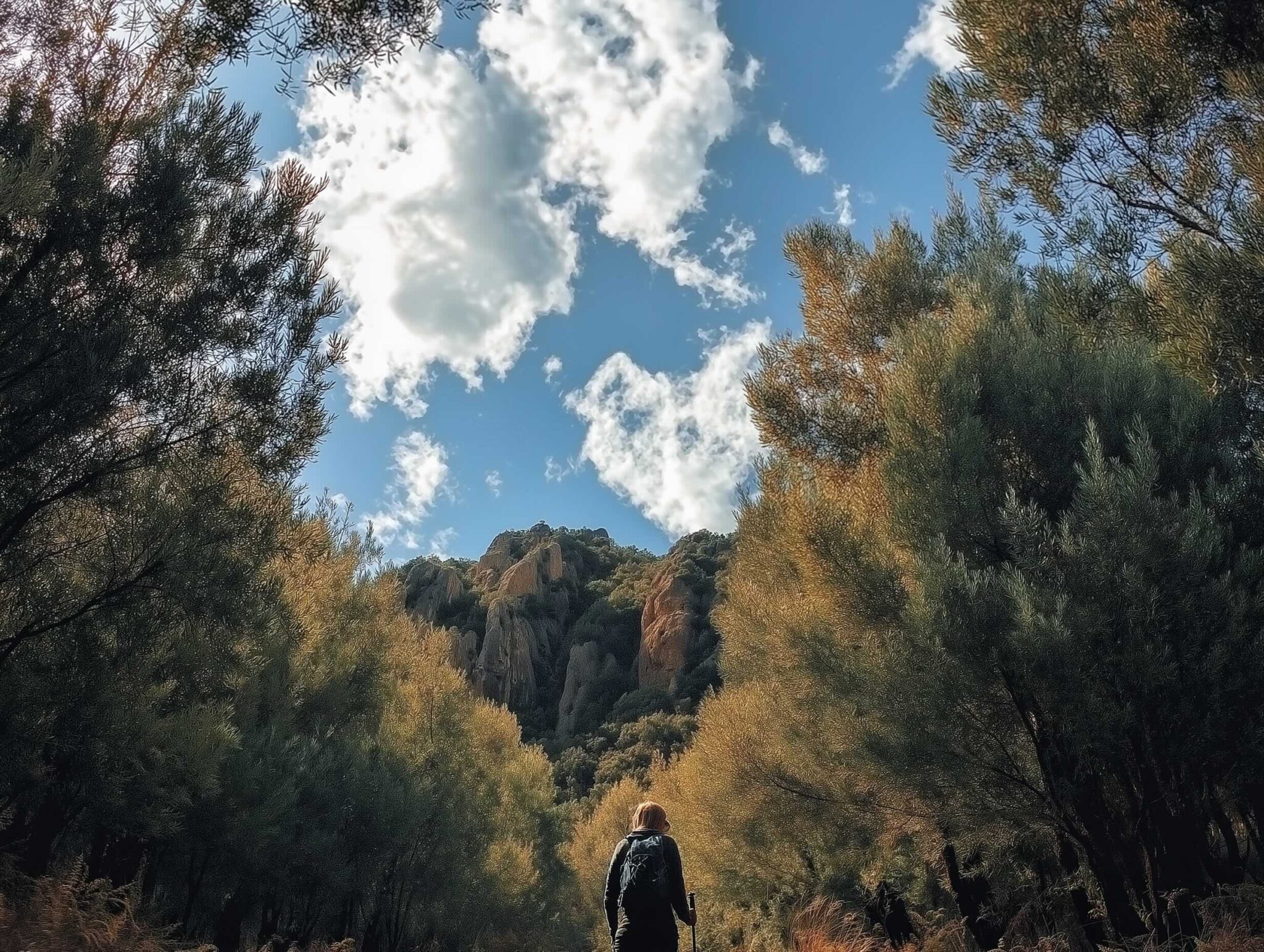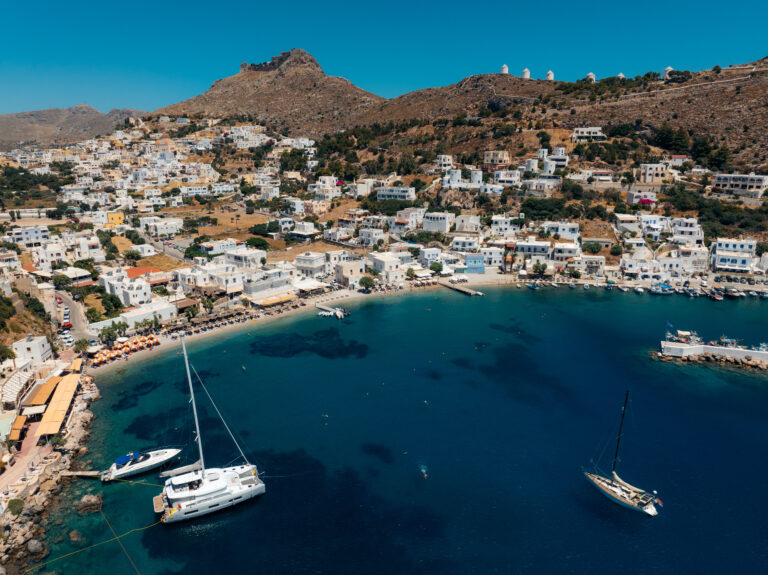Most Greek cities are not renowned for their infrastructure, nor are they friendly for individuals refusing to use cars on a daily basis. But exceptions do exist. The provincial city Karditsa, in central Greece, is one of these.
Karditsa, like most parts of the wider Thessaly area, is flat, sparing cyclists of uphill-downhill successions, while the city is compact in size. Aided, then, by a favourable landscape and size, this city has justifiably been regarded as Greece’s bicycling capital for decades.
No matter what part of the city you are in, bicycles can be seen in numbers. The bicycle has represented the key mode of transport here since the 1960s. Locals cycle to work, students from nearby villages have used bicycles to commute to the city’s schools. In previous decades, bicycles had registration plates attached at the back.
However, by the 1980s and 1990s the number of vehicles in the city proliferated, gradually creating traffic congestion and parking problems. The bicycle would eventually make a comeback to resolve these issues. In 2003, local authorities began developing a network of bicycle lanes. They now cover the entire city and are expected to be extended further. Bicycle lanes in this bicycle-friendly city cover a total length of 7.3 kilometres, while the bicycle lanes in the surrounding areas total 10.5 kilometres.
“It’s difficult to find even one resident of the city, male or female, child or grown-up, who has not been a regular bicycle user during his or her lifetime. We have customers who had first come to our bicycle shop as children with their grandfather, buying for them their first bicycles as presents, and now they are returning with children or grandchildren of their own to buy bicycles for them,” noted Ilias Raptis, owner of Koyias, a bicycle and bicycle repair shop.
The Koyias bicycle shop is among the oldest of its kind in the country. Mr. Raptis represents its third generation, while his 22-year-old son is already working at the store.
“The people of Karditsa are definitely strongly attached to their bicycles. The city’s geography plays a role in this. Karditsa is small and flat, it does not require a top-notch bicycle for getting things done. We have repaired bicycles that were made in the 1970s and are still being used,” Mr. Raptis explained. “Individuals who have moved to Karditsa for professional reasons seem to be enjoying this city trademark. Bicycling reminds them of their childhood,” he added.
Reflecting the widespread usage and ownership of bicycles in Karditsa, totaling over 20,000, not a single private-sector bicycle rental company operates in the city. However, the municipality does offer visitors swift and efficient bicycle rental service with a fleet of approximately 80 bicycles that can be used for unlimited periods of time before being returned to any of the service’s rental stations.
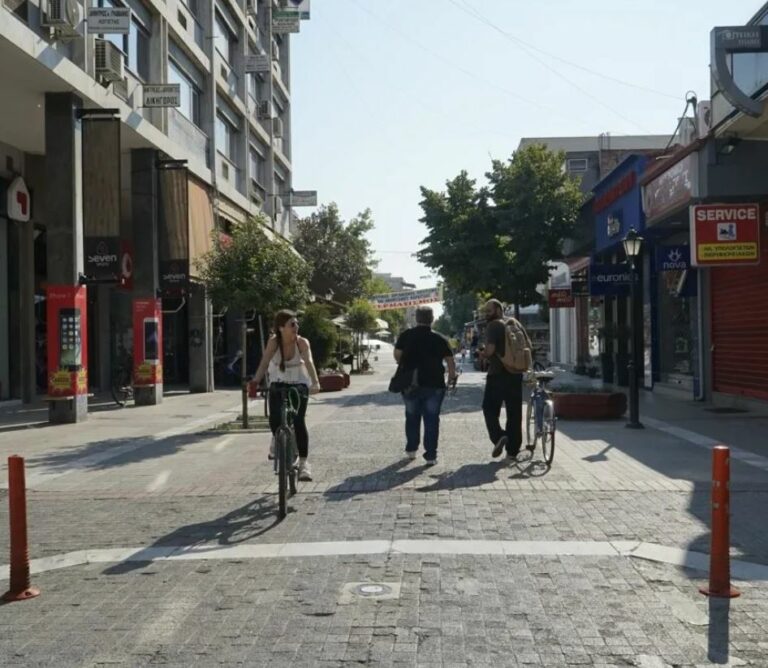
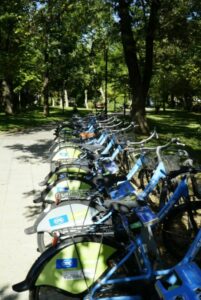
Virtually accident-free
Given the thousands of bicycles in circulation in and around Karditsa, the number of accidents are extremely limited. “Having witnessed some reckless, often out-of-control, cycling on the streets, the safety record is somewhat of a surprise, even for me,” noted Thomas Arvanitis, president of the Karditsa Cycling Club. “We must not forget that the bicycle, too, is a vehicle and cyclists need to abide by road traffic laws. Perhaps the low incidence of bicycle-related accidents has to do with the fact that a large number of car drivers in Karditsa are usually cyclists themselves. So they are particularly careful on the wheel,” he continued.
The extensive development of Karditsa’s bicycle lane network has been a key factor in the maintenance of a good road safety record.
“Interestingly, older people are not obeying road traffic laws, which also apply for bicycles. Rules for one-way streets and traffic lights are being neglected, often by elderly cyclists,” noted Emy Nestoridi, general secretary at the Karditsa Cycling Society. “Younger cyclists who were brought up using the bicycles lanes are more law-abiding.”
The Karditsa Cycling Club was founded approximately ten years ago. Its objectives include upgrading the region as a cycling destination. The club organises an annual randonneuring event around the area’s two lakes. Participants face the challenge of completing the event’s 200-kilometre distance, which covers the entire prefecture, in up to 13 ½ hours.
“The route passes by two lakes, Lake Plastiras and Lake Smokovo, as well as other delightful settings. One-hundred cyclists from Greece and abroad participate,” informed Mr. Arvanitis.

Cycling has also helped limit the living costs of residents. During the country’s recent decade-long recession, the number of bicycles in Karditsa increased further as many residents realised they could no longer afford to use their cars on a daily basis.
The Karditsa Cycling Club is seeking to promote Karditsa as a sports tourism destination. “As a next step, it would be good to have an artificial mountain biking track for training purposes,” Mrs. Nestoridi remarked.
Despite the prevalence of bicycles, local authorities are still making efforts to further boost the use of bicycles. Enterprises using bicycles for food delivery and courier services are partially exempted from municipal taxes. This was one of the initiatives that helped Karditsa become the first Greek city to gain “Cycle-friendly Employer” certification, a European standard for bicycle-friendliness in the European workplace, issued by the European Cyclists’ Federation.
Top European mobility award for 2020, high objectives this year, too
The municipality’s tax-exemption initiative, as well as the city’s extensive bicycle lane network, helped Karditsa win the first prize, among 3,134 cities, in the Small Municipalities category at European Mobility Week 2020, an annual initiative of the European Commission for sustainable urban mobility. This year’s European Mobility Week event began on September 16 and ends September 22. It has been adjusted with public health protocol intact.
Karditsa is aiming for distinction once again this year. Besides a further extension of its bicycle lane network, the city’s local authorities also plan to soon develop approximately 20 kilometres of footpaths. Their modern design will fully cater to the transportation needs of disabled persons. The municipality’s upgrade will also prioritise repair work at bicycle lanes damaged by adverse conditions in recent months.
“It would be a good thing for bicycles to become the most popular mode of transport in other Greek cities, too,” Mrs. Nestoridi said.
Reasons to favour the bicycle
Health
Cycling offers numerous obvious health benefits. Health professionals recommend at least half an hour of medium-intensity exercise per day. This objective is easily achieved by cyclists. Cycling, an aerobic exercise, improves heart functionality, muscle and bone strength, and also reduces body fat.
Economy
Without a doubt, cycling, compared to driving, is an extremely affordable mode of transport. A simple or used bicycle costs very little and lasts many years. Cyclists are spared of fuel costs, registration fees and expensive repairs.
City mobility
The mobility offered by bicycles is the main factor behind its success in Karditsa. Cyclists here can make it to any part of the city within 15 minutes, a far swifter option compared to walking and minus the parking-availability anxiety often faced by drivers.
DIY repairs
Unlike cars, bicycles are simple mechanisms. Most spare parts are cheap and readily available, while the majority of repairs can be performed by cyclists, themselves. Even if a visit to a repair shop is needed, the cost is modest.
Social benefits
Bicycling is not just a mode of transport. It is also a sport and enhances social life. Avid bicycle users are never without a friend or groups of friends.
Environmentally friendly
Bicycle users do not emit greenhouse gases. Contrary to cars or motor bikes, bicycles are far less likely to fatally wound animals. Also, the production of bicycle parts and their assembly requires far fewer materials and less energy compared to cars.
Exercise for all ages
Jogging as a form of exercise can eventually lead to knee issues, or overuse injuries. The same applies for most sports activities. On the contrary, cycling causes minimal strain to the knees and lower parts of the body, meaning cyclists can continue riding bicycles for a lifetime. However, cyclists need to maintain their saddles at the right height. Failure to do so can cause injuries.
Satisfaction
You will rarely see any cyclist looking miserable. This may have to do with the pleasures offered by cycling. Rolling down a hill, riding on a sunny day, even the avoidance of traffic jams are simple everyday pleasures enjoyed by cyclists.



